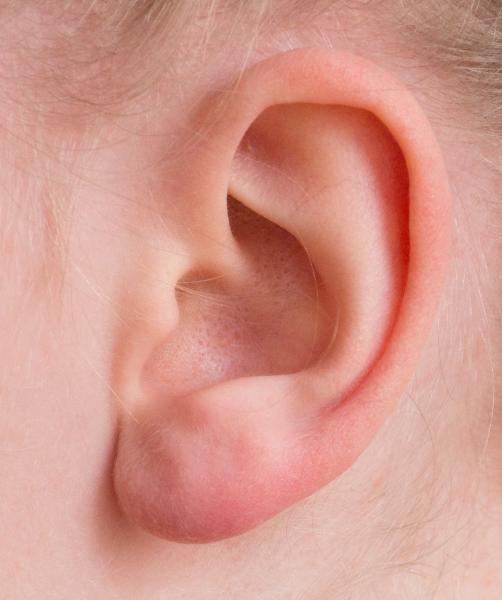How do we hear?
Sound waves, really variations in air pressure, are collected and directed towards the eardrum by our outer ear, where we hang our glasses and the ear canal. Those waves strike the eardrum (tympanic membrane), transmitting those vibrations to the three small bones of the middle ear - the malleus (hammer), incus (anvil), and stapes (stirrup). The mechanical linkage of the three amplifies the incoming vibrations and transfers them through the oval window, a membrane-covered opening that leads to the fluid-filled cochlea.
Cochlea" is derived from the Latin word for "snail shell" or "spiral," reflecting the distinctive and intricate spiral form of the cochlea, which is a critical component of the auditory system responsible for converting sound vibrations into electrical signals that the brain can interpret as sound. Its spiral shape is essential for its function, allowing different regions within the cochlea to be sensitive to specific sound frequencies, a concept known as tonotopic organization. High-frequency sounds stimulate cells near the base of the cochlea, while low-frequency sounds stimulate cells toward the apex.
Tiny sensory cells with hair-like structures (stereocilia ) on their surface, termed hair cells, bend in response to the motion of the cochlea’s fluid. The bending of the hair cells triggers the release of neurotransmitters, creating electrical signals. The auditory nerve picks up these signals, which carry the information to the brain. Today’s story lies in the presence of zinc, which modulates those neurotransmissions. [1]
There are four main types of hearing loss:
- Conductive Hearing Loss, caused by obstructions in the outer or middle ear
- Sensorineural Hearing Loss, related to issues in the inner ear or hearing nerve
- Mixed Hearing Loss, a combination of conductive and sensorineural loss
- Auditory Neuropathy Spectrum Disorder, where damage to the inner ear or hearing nerve disrupts the organization of sound in the brain.
Sensorineural hearing loss is the most common form and may be due to aging, exposure to loud noises, certain medications, and various medical conditions. While exposure to loud sounds often explains hearing loss in aging rockers, it is a far more significant problem for our armed forces. Hearing loss is the second most common service-related disability, following closely on the heels of another hearing affliction, tinnitus.
Noise-induced hearing loss (NIHL) impacts roughly one out of every five adults. In addition to being a hindrance to social activity, hearing loss in adults 45 to 64 was associated with a 42% increase in dementia compared to their hearing-able colleagues. NIHL works through various mechanisms, including the loss of hair and supporting cells in the cochlea and their synaptic connection to the underlying neurons. Zinc, an essential but trace mineral, is critical in the enzymatic activity of many metabolic pathways but is most often bound up in the enzymes that accelerate those reactions. A small amount of zinc, “labile” zinc, is found in the chemical pouches, the vesicles, that are released when nerves are excited and pass signals on to the next cell in the chain. Labile zinc modulates neurotransmission and sensory processing. Zinc concentrations are the highest in our inner ears, the transformer of vibrations into sounds, but little is known about zinc’s role in signaling.
The researchers using a mouse and a specific gene, Slc30a3, involved in zinc transport across those vesicles, found that it was found and expressed predominantly in the cochlea on those sound-translating hair cells. When mice were exposed to loud noises significant enough to cause changes in auditory signaling consistent with impairment, zinc levels rose, and their distribution within their cochlea changed – a response the researchers termed “zinc dysregulation.” Further testing identified the protein expressed by Slc30a3 as the proximate cause of the dysregulation. In a final series of experiments, the researchers found that “knocking out” the Slc30a3 gene and reducing the levels of zinc by chelation [2] restored hearing to pre-noise exposure levels.
As with all good scientific research, we are left with more questions than answers. Labile zinc has been known to be involved in other traumatic neurologic injuries, and how these elevated levels of zinc harm hearing is unknown. On the other hand, chelation may prove to be a useful target to mitigate hearing loss due to loud noises.
Source: Cochlear zinc signaling dysregulation is associated with noise-induced hearing loss, and zinc chelation enhances cochlear recovery PNAS DOI: 10.1073/pnas.2310561121
[1] This YouTube video does a great job explaining the underlying anatomy and function of the cochlea
[2] Chelation describes the process of bonding zinc to other molecules, in this instance, reducing the amount of labile zinc present.




